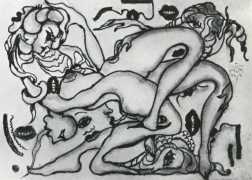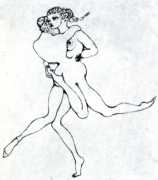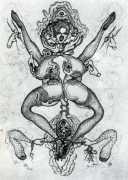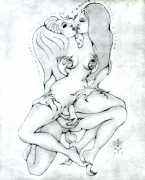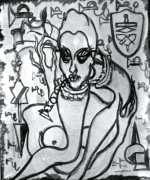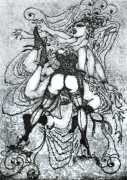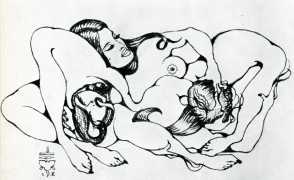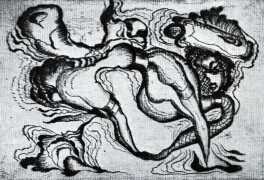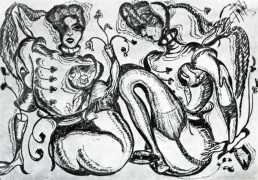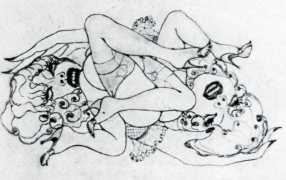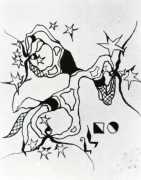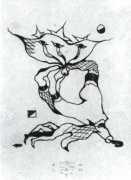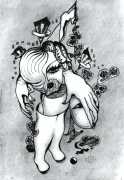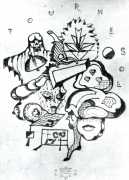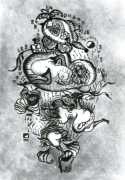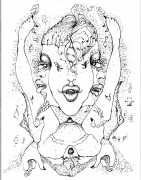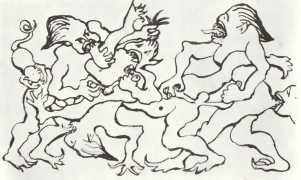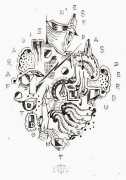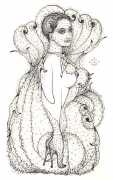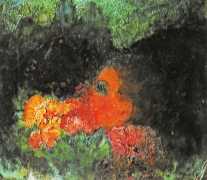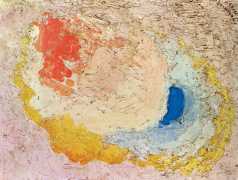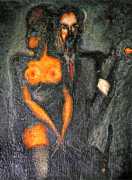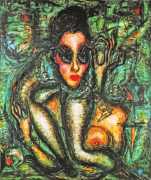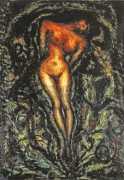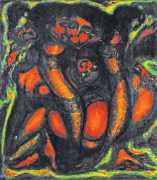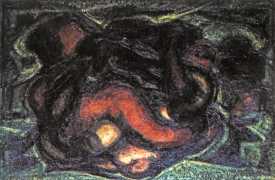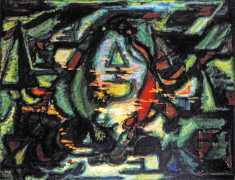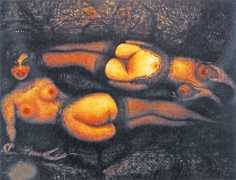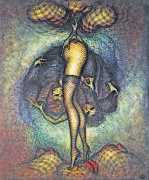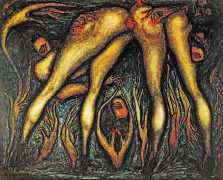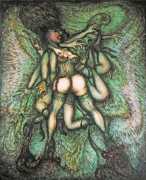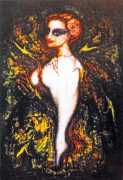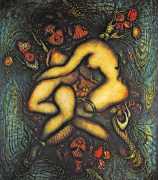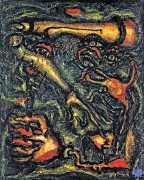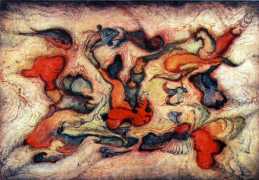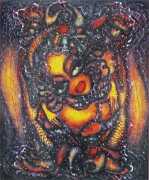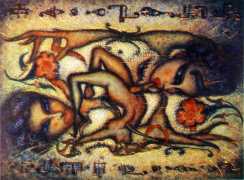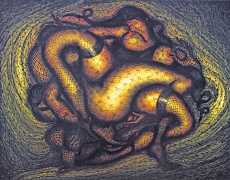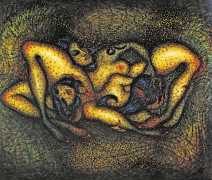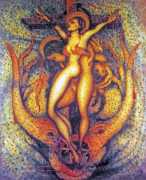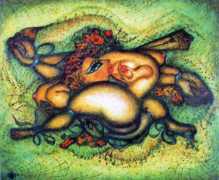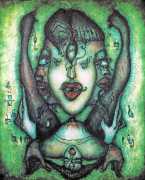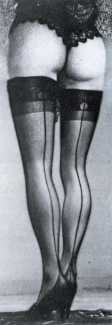
From the 1920s to the end of the 1940s, Molinier’s painting was figurative – landscapes of Lot-et-Garonne, still lifes and portraits, notably of his daughter Françoise. His search for structure, colour and light brought him to Impressionism, while his portraits are more evocative of Expressionism. It was in the 1940s that he began to produce more ambiguous and provocative drawings and paintings.
As well as several poems by André Breton, Molinier also produced illustrations for fellow Surrealist writer Joyce Mansour. But he mostly produced drawings and paintings, as he explained, ‘for my own stimulation. It is only in this way that I can satisfy my leg and nipple fetishism. The legs of either sex arouse me equally – as long as they are hairless and in black stockings.’
Many of the drawings shown here are studies for Molinier’s paintings. The titles and dates of the paintings are:
Amour (Love), 1928
La dame blonde (The Blond Woman), 1928
Les amants à la fleur (Flower Lovers), 1948
Comtesse Midralgar, 1950
Holocauste (Holocaust), 1950
Succube (Succubus), 1950
Le grand combat (The Great Confrontation), 1951
Le retour des vendanges (Harvest Home), 1952
La fleur de Paradis (The Flower of Paradise), 1955
Les femmes actuelles sont (Contemporary Women), 1955–65
Le pas de quatre (Four-Step), 1960
Le réveil de l’ange (The Angel’s Awakening), 1960
Succube No. 1 (Succubus No. 1), 1960
Susinella, 1960
Ce qui est solonnel (That Which is Solemn), 1962
Ah, les V (Ah, the V), 1962
Courbillard No. 6, 1962
Culminate, 1962
Les jumelles amoureuses (The Lover Twins), 1962
Petit bec, l’oeuf d’amour (Little Beak, The Egg of Love), 1962
Le miroir (The Mirror), 1964
Le grand combat No. 2 (The Great Confrontation No. 2), 1964
Les amoureuses (The Lovers), 1965
Oh Marie, mêre de dieu (Oh Mary, Mother of God), 1965
Exémaly, 1969
La communion d’amour (Communion of Love), 1971
Le Baphomet, 1971 (Baphomet is a deity allegedly worshipped
by the Knights Templar)


